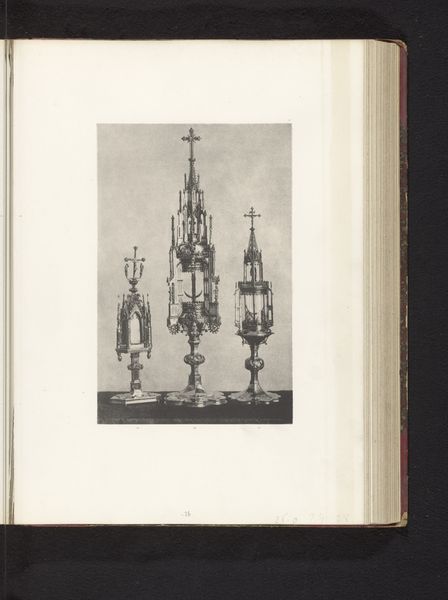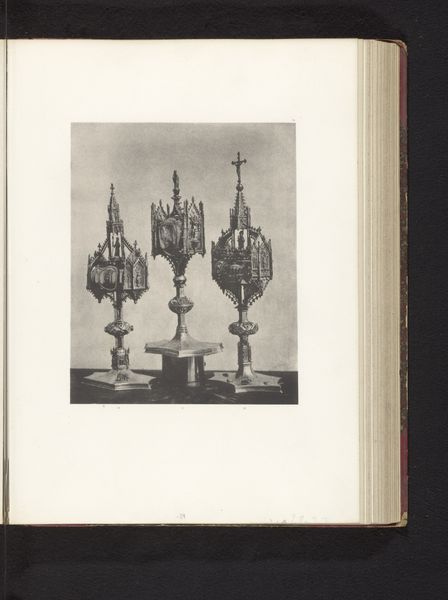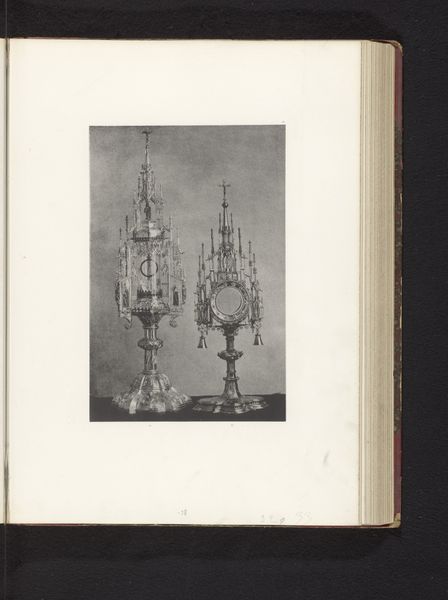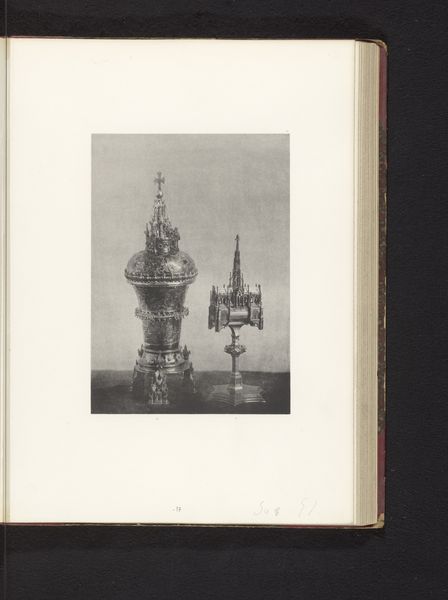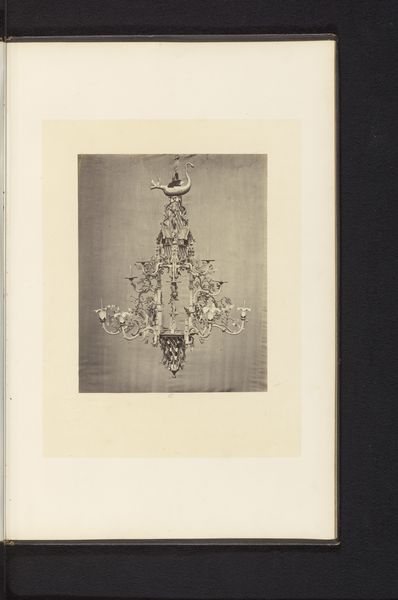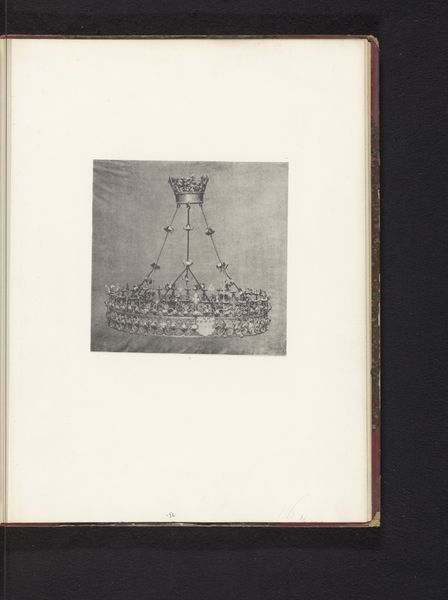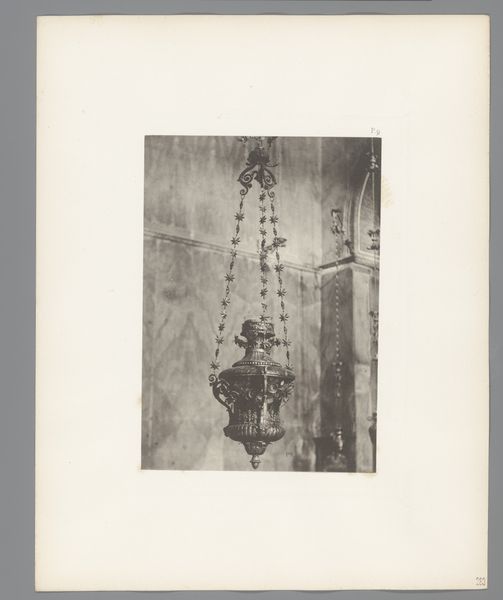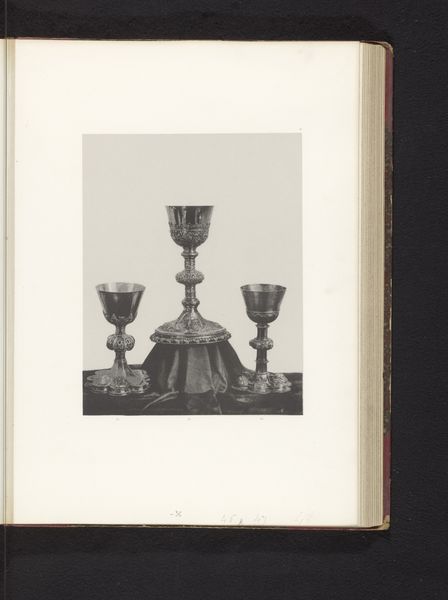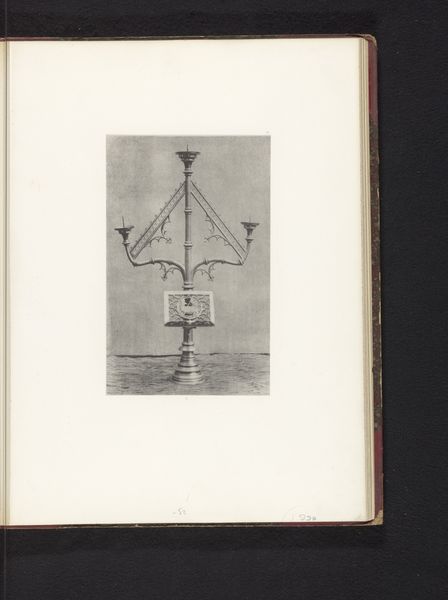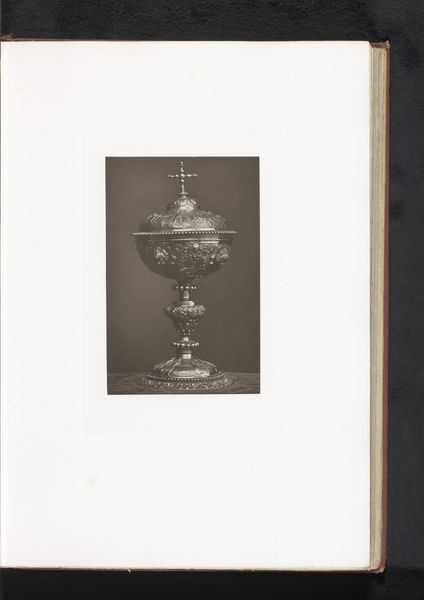
Vergulde monstrans uit de Sint-Jakobskerk in Leuven, opgesteld op een tentoonstelling over religieuze objecten uit de middeleeuwen en renaissance in 1864 in Mechelen before 1866
0:00
0:00
print, photography, sculpture
#
medieval
# print
#
photography
#
sculpture
Dimensions: height 269 mm, width 168 mm
Copyright: Rijks Museum: Open Domain
Editor: So, this is a photograph of a "Vergulde monstrans uit de Sint-Jakobskerk in Leuven," a gilded monstrance from St. James' Church in Leuven. The photo was taken before 1866, capturing it at a medieval and renaissance religious objects exhibit in Mechelen in 1864. It feels both imposing and fragile, like it's holding secrets. What's your take on this work? Curator: What strikes me is not just the object itself but its representation through photography in the mid-19th century. Consider the power dynamics at play. We have a sacred object, typically viewed within a specific religious context, being put on display for secular consumption and captured through a modern, rapidly developing technology. What does it mean to take an object of faith and turn it into a spectacle? Editor: That's a great point. I hadn’t considered the exhibition itself as part of the narrative. Were these kinds of displays common? Curator: These exhibitions were ways of framing and codifying identity in the newly forming nation-states. Displaying religious objects of the medieval past served to solidify a national narrative, often sidelining or suppressing the voices and histories of marginalized communities. Did the presentation uphold existing religious hierarchies? Editor: Probably, yes. It does feel very... curated, doesn't it? So, in a way, this image isn't just about religious devotion, but also about how power uses even religious items to further nationalistic narratives? Curator: Precisely! It asks us to consider whose story is being told, and whose is being erased in the process. It is also important to analyze not just its aesthetic elements, but its very real presence in a colonial Europe struggling to build and justify itself. Editor: I never would have thought to analyze a photograph of a monstrance in that light. It really puts the piece into a different, much larger context. Thanks!
Comments
No comments
Be the first to comment and join the conversation on the ultimate creative platform.
